The Ulysse Nardin Freak, Revisiting a Watch That Changed The Face of Modern Watchmaking
An avant-garde masterpiece that smashed all conventions and pioneered the use of silicon in the watch industry.
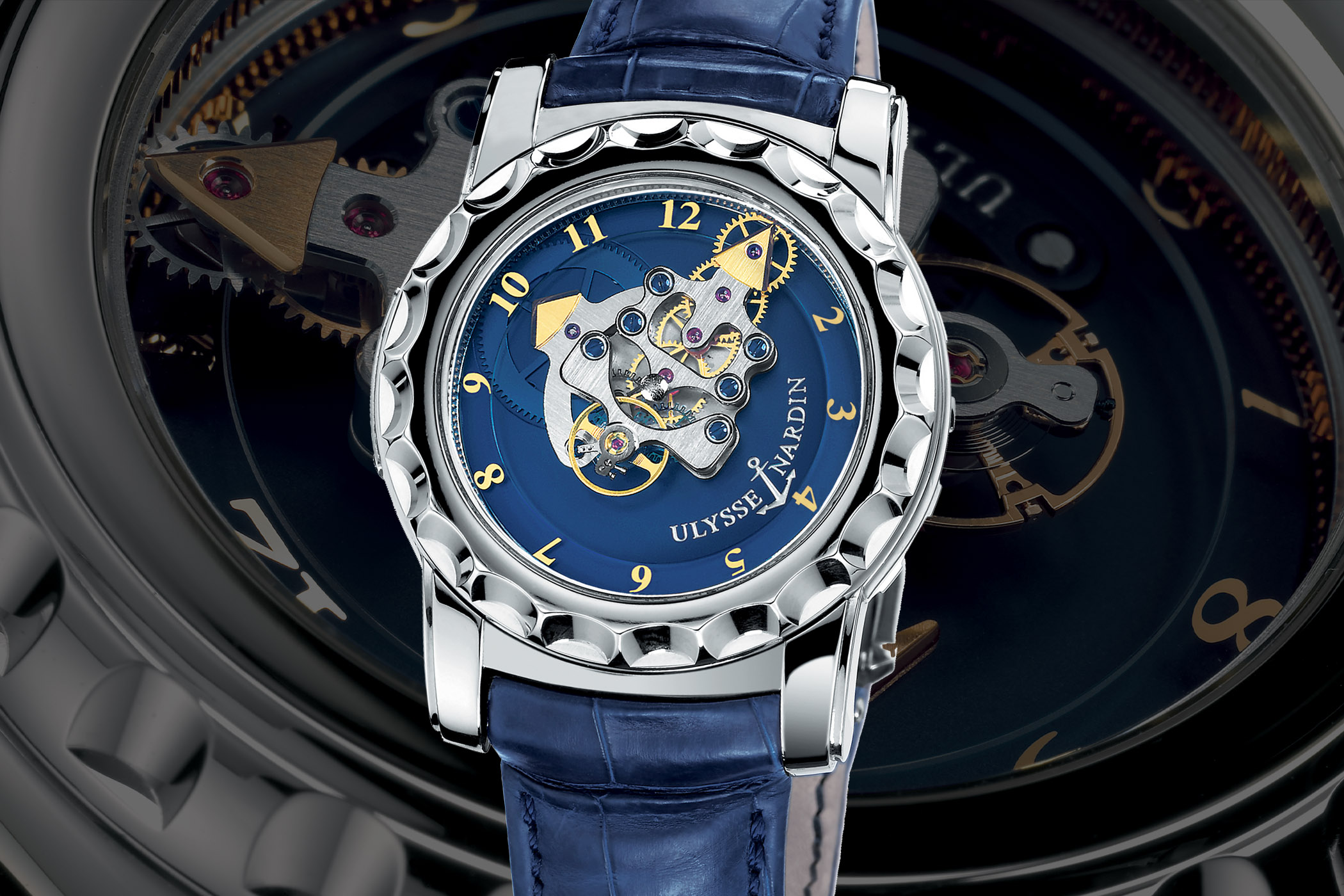
The genius and madness are separated by a very thin line. Weirdos and rebels, people who are different enough, crazy enough, are the ones who change the world. In that respect, the Ulysse Nardin Freak could not be more aptly named. This innovative, disruptive avant-garde masterpiece smashed all conventions and simply changed what’s on our wrist today…
The late 1990s were still a time for the renaissance of mechanical watchmaking and the Swiss watch industry hadn’t yet fully recover. Back then, very few watchmakers were actually producing movements internally. Most of the industry was sourcing from the same movement manufacturers, ETA for industrial movements, and a few high-end makers such as Frédéric Piguet, Lemania, Zenith or Girard-Perregaux, to name a few. Most of the brands were simply happy enough with the renewed interest in mechanical watchmaking…
But with the turn of the new millennium, some people tried to take more risks and create different things. That’s what happened at the Ulysse Nardin, in particular with the Freak. Incidentally, watchmaking was probably ready for a change. The Freak burst onto the scene in 2001, a year that also saw the birth of the Richard Mille brand or the release of the Harry Winston Opus I, inaugurating a series that would have a major influence on independent watchmaking… and the watchmaking industry in general.

Founded in 1846, Ulysse Nardin has a long tradition in the field of chronometry and is well known for manufacturing accurate marine chronometers. But in the 1980s, the encounter between Rolf W. Schnyder, a businessman and visionary, and Ludwig Oechslin, a brilliant horologist, turned this traditional manufacturer into one of the most innovative watch brands around. This partnership would yield several milestones in mechanical watchmaking history. Among these, is the legendary Freak with its disruptive design and innovative technical solutions. A watch like nothing else that had been seen before.
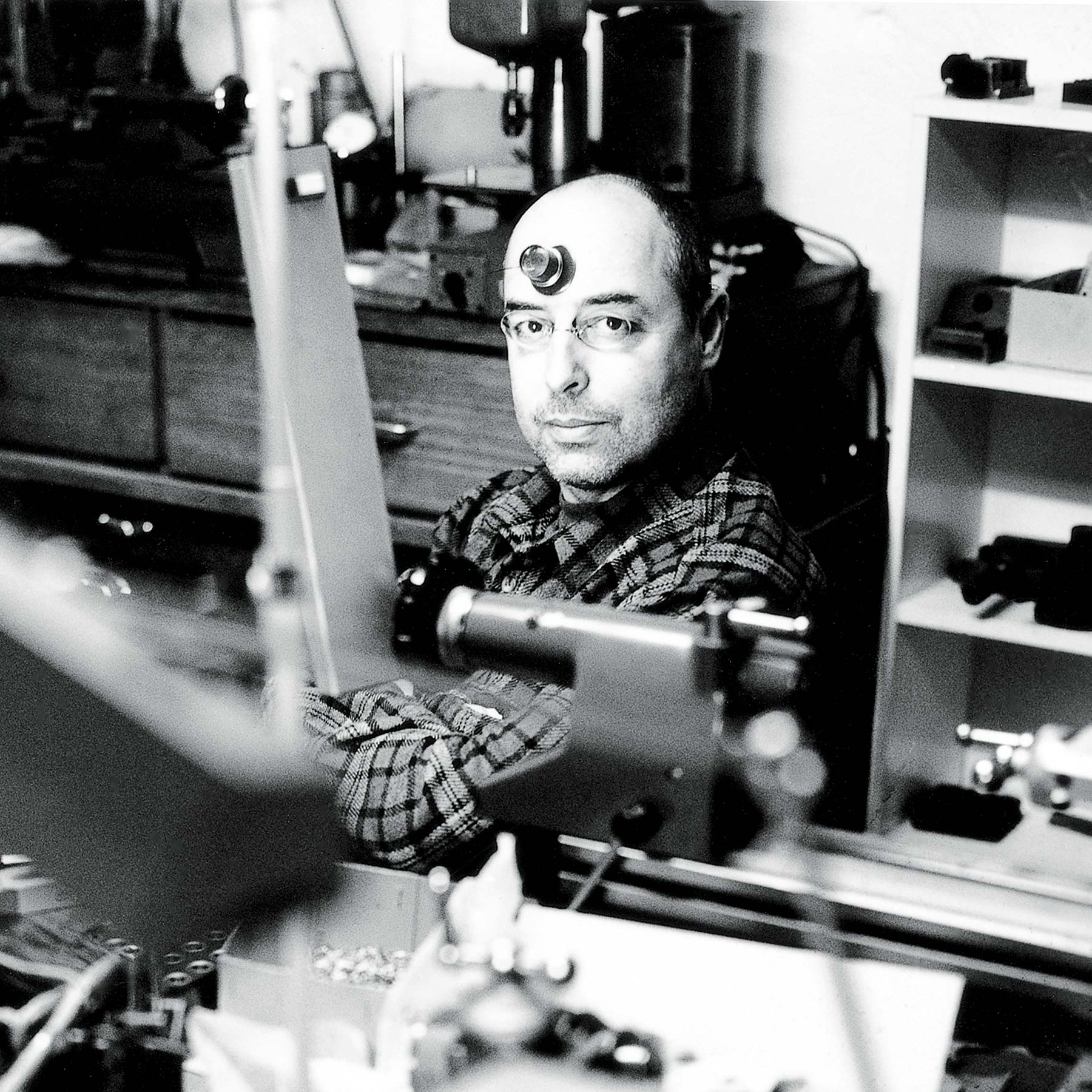
Picture this: 20 years ago, a watch with no crown (the time could be adjusted rotating the bezel), no dial, revealing a revolving movement featuring a gear train and escapement rotating once every hour and showing the minutes. It was regulated by the “Dual Direct Escapement” with silicon escapement wheels. With it, Ulysse Nardin became not only the pioneer of the use of silicon in mechanical watchmaking but developed a brand new escapement – and if creating a new escapement remains a crowning glory for the most skilful and creative watchmakers today, at the time, this was almost unheard of (with the notable exception of the Daniels escapement).

The Genesis of the Ulysse Nardin Freak
The Freak started from a carousel “tourbillon” project at Ulysse Nardin. It was based on an idea by Carole Forestier, who had just received the Prix de la Fondation Abraham-Louis Breguet for a central carousel tourbillon design. Rolf Schnyder decided to involve Oeschlin in this project, as the development team was facing several challenges. With only about 10 hours of power reserve, a drastic evolution of the movement was necessary to create a functional watch.
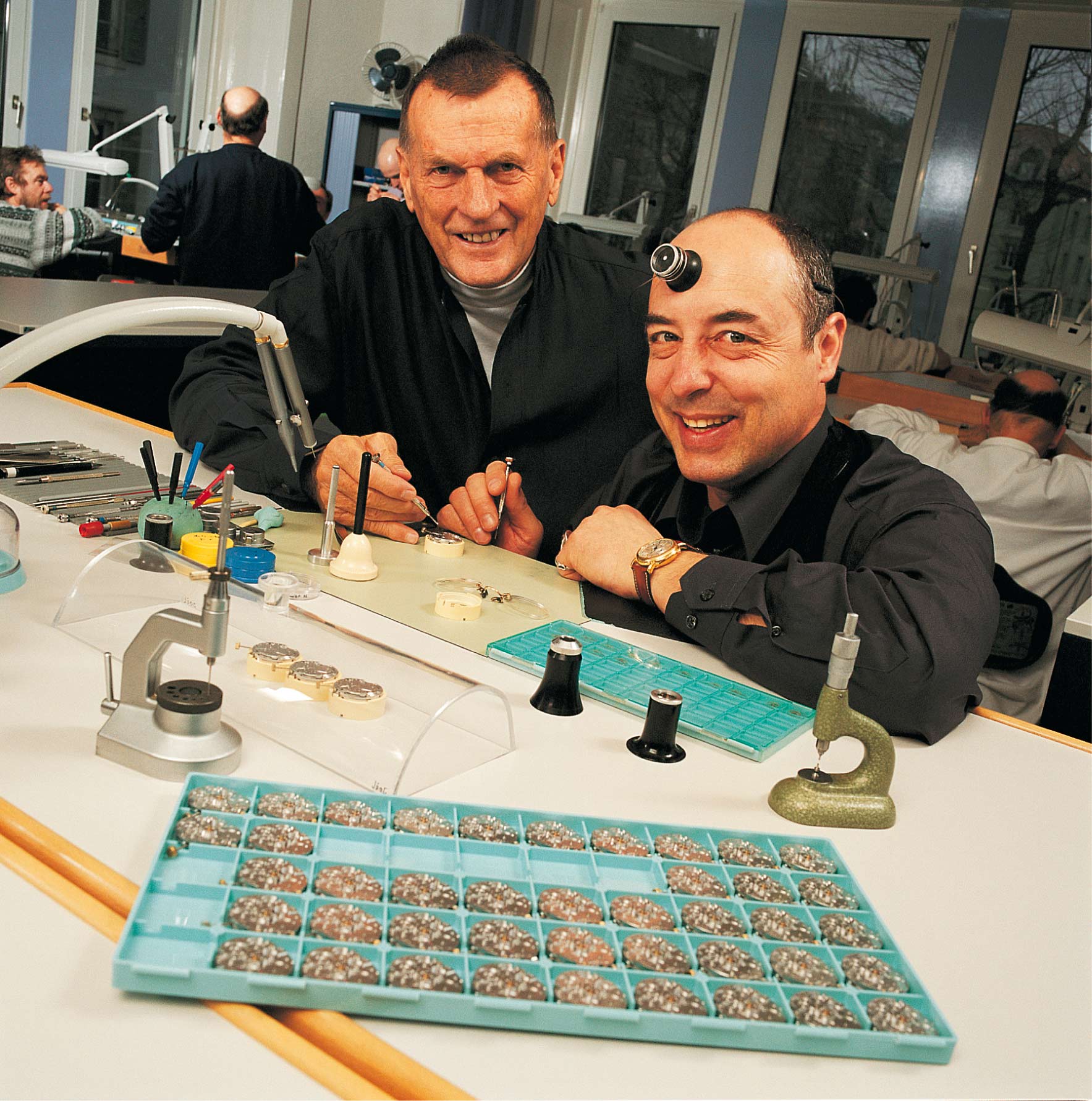
With the inputs of Oeschlin, the design evolved significantly. The mainspring was relocated underneath the movement. Coiled within a drum as large as the entire case, it would provide enough power to drive the movement for 7 days! The gearing was modified to morph the carousel into the time display, having the in-line gear train and regulator rotating in 60 minutes to display the minutes. The hour indication is then driven directly by the barrel that would rotate once in 12 hours. The movement is wound by rotating the caseback and time is set by rotating the bezel.
Oeschlin was also responsible for regulating the Freak with his Dual Direct Escapement that he had used previously only in an old clock. Oeschlin had suggested multiple times – without success – to Schnyder to use this escapement into some of the brand’s wristwatches. The Freak would be the perfect development to showcase it. Because the whole concept was so disruptive and because the escapement would be on full display, on top of the movement.
Above: The Dual Direct Escapement of the Freak I (2001) with direct impulse, the Dual Ulysse Escapement (2005) of the Freak 28’800 with indirect impulse and the Dual Constant Escapement (2017) with flexible silicon blades
The miniaturization of the Dual Direct Escapement contributed to propelling watchmaking into the use of innovative materials and production technology. Like the Breguet natural escapement, the Dual Direct Escapement incorporates two escape wheels and the impulses are transmitted as directly as possible from the escapement wheels to the balance wheel. Operating in alternation, and giving two impulses per oscillation, these escapement wheels do not need lubrication. Among the main drawbacks is the additional inertia resulting from the two escape wheels. The Ulysse Nardin had to make these as light as possible. Aluminium showed the escapement could work but was wearing out way too fast. This led Ulysse Nardin to etch the wheels out of Silicon. Besides its low weight and hardness, silicone had other crucial properties to make it an ideal material to manufacture watch parts. It is non-magnetic, resistant to corrosion and wear, flexible and generally requires no lubrication. In addition, its manufacturing process allows creating highly complex shaped components, with unprecedented precision.
The Freak and the brand’s research in the use of new technologies and materials opened up amazing possibilities. Ulysse Nardin truly heralded a new era in mechanical watchmaking, using silicon, nickel and nickel-phosphorus (LIGA) or diamond, ‘DIAMonSIL’ (silicon covered with synthetic diamond) to shape components within avant-garde concepts. To support this forward-thinking strategy, Ulysse Nardin even created Sigatec in 2006 (together with Mimotec) which is involved in LIGA and DRIE technologies to manufacture components.
The PROTAGONISTS
A project as disruptive and complex as the Freak was only possible with a team gathering a wide scope of talents. To name a few of them, the creation of that horological icon involved Rolf Schnyder, Ludwig Oechslin, Carole Forestier, Pierre Gygax (Responsible for production), Lucas Humair (then responsible for technical developments now Chief Industrial and Supply Chain Officer for Ulysse Nardin and Girard Perregaux), Raimondo Brenni (designer), Regis Teutschmann (laboratory watchmaker and prototypist)…
The evolution of the Ulysse Nardin Freak
In its 20-year history, the Freak has been blazing its own trail, evolving in many directions. Still, it has always followed the same guiding principles, to show as much as possible of its inner workings and to be a laboratory on the wrist. In this respect, Ulysse Nardin has used this groundbreaking concept as the platform for a number of innovations since then. Here are some of the most striking mutations of the Freak!
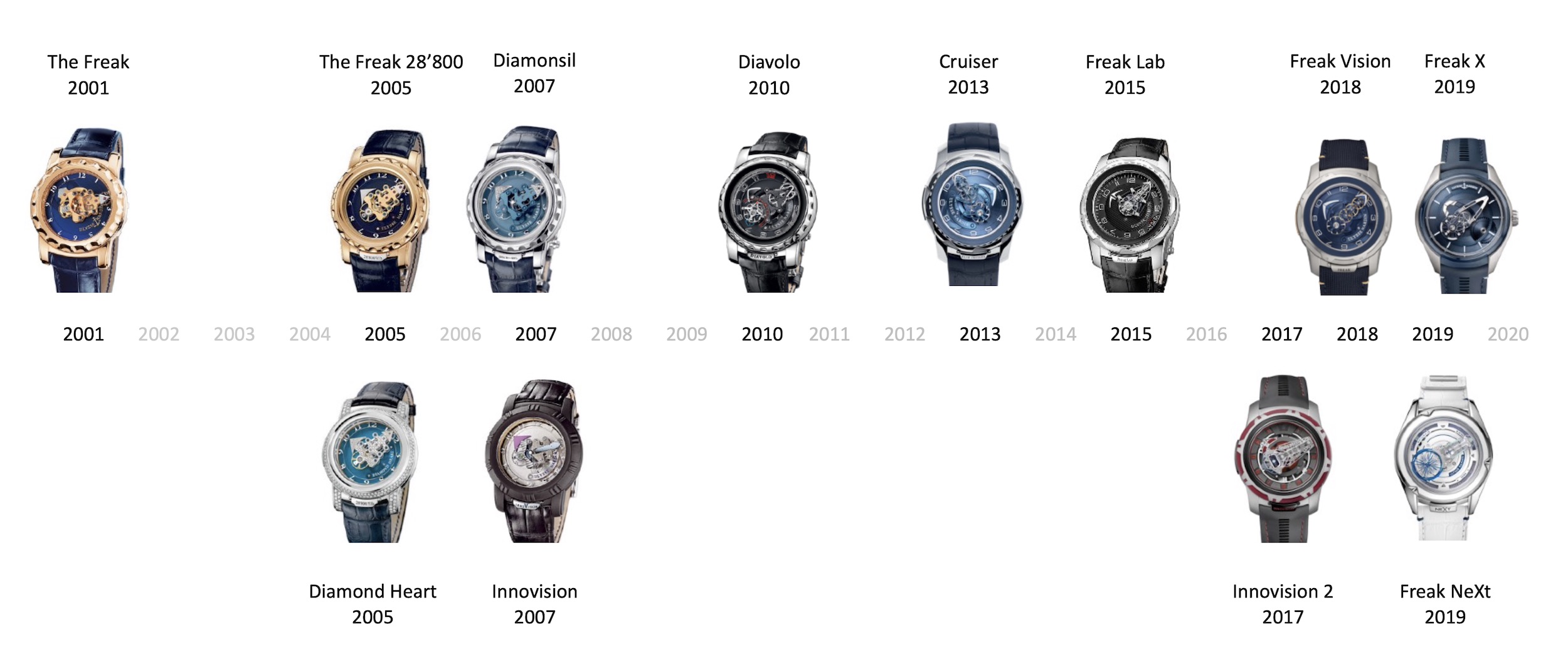
2001 – The Freak
Ulysse Nardin shakes up the watch world launching the Freak in 2001, a horological UFO with no dial, no hands, no crown and a novel silicon direct impulse escapement, pioneering the use of this material in the watch industry.
2005 – The Freak 28’800
The second version of the Freak incorporates several technical upgrades. The Dual Direct Escapement is replaced by the Dual Ulysse Escapement with indirect impulse. The frequency of the oscillator is upgraded at 4Hz versus 3Hz. The annular balance wheel is replaced by a variable inertia balance with 4 adjustment screws. The case is enlarged at 44.5mm.
2005 – The Freak Diamond Heart
A new step in Ulysse Nardin’s material experimentation, the Freak Diamond Heart incorporates escapement wheels and parts fashioned out of synthetic diamond. This innovation will be soon replaced by another innovation given the sky-rocketing production cost linked to this technology.
2007 – The Freak Diamonsil
The Diamond heart is replaced in 2007 by the DiamonSil, which consists of diamond-coated silicon – a solution that is still in use today for the UN-118 calibre for some of the regulator parts, in particular, the escapement wheel and the anchor. The 2008 Blue Phantom is essentially an animation of this model.
2007 – The InnoVision Concept Watch
The Ulysse Nardin Freak as always been conceived as a laboratory on the wrist. In this respect, the InnoVision 1 is a milestone with its ten innovations, each representative of Ulysse Nardin’s vision of where mechanical watchmaking should be heading. In particular, the watch was completely oil-free!
(1) Mainspring barrel on ball-bearings (2) Dual Ulysse Escapement (3) Silicon bearings (4) Ultra-high precision in shaping plates and bridges (5) Composite bridge (6) one-piece silicon shock-absorbing system (7) Silicon hairspring (8) One-piece roller and pin (9) One-piece horns and pin (10) Two-level process in production of escapement wheel with pinion
2010 – The Freak Diavolo
Named after the devilish appearance of its power-reserve indicator on the back of the watch with its red horns, the Freak Diavolo stands apart for being regulated by a flying Tourbillon (making it somehow a double tourbillon/carousel) with a Swiss lever escapement. The carousel tourbillon, acting as a minute indicator, makes one complete rotation an hour, and the flying tourbillon sits above the carousel.
With yellow accents and a ‘Rolf 75’ signature on the bezel clip, the Freak Diavolo ‘Rolf 75’ edition was released to commemorate the 75th anniversary of the late owner and president of Ulysse Nardin.
2013 – The Freak Cruiser
The Cruiser is essentially an aesthetic evolution of the Freak. One of the most notable evolutions being the softer lines of the bezel, fluted to look like waves and replacing the previous “beer opener” bezel. A safety clip is located at 6 o’clock between the lugs. Claude Emmenegger (also known for the creation of the Royal Oak Concept) was involved in its design.
2015 – The Freak Lab
With the Freak Lab, the upper floating bridge has been completely redesigned and the oscillator is located in the centre of the watch. For the first time, the Freak gets a date indication. Despite the addition of the function, the watch still has no crown. The front bezel is used to set the time in one direction and the date in the other.
2017 – The InnoVision 2 Concept Watch
10 years after the InnoVision 1, the InnoVision 2 is another impressive concept showing off some serious avant-garde innovation, in particular, a new constant force escapement – the Dual Constant escapement – and a new winding system dubbed Grinder. 8 out of 10 of these innovations would make it to production (7 out of 10 for the InnoVision 1).
(1) Dual constant escapement (2) Direct silicon bonding (3) Silicon balance wheel with gold mass elements and stabilizing micro paddles (4) Grinder automatic winding system (5) Sapphire coated silicon bridge (6) 24-karat hard gold wheels (7) Glass bridge with integrated shock protection for the balance wheel (8) Superluminova filled channels integrated into the glass balance wheel bridge (9) 1-11 and 13-23 display (10) Three-dimensional glass
2018 – The Freak Vision
The Vision is the first Freak fitted with automatic winding taking advantage of the Grinder concept presented with the InnoVision 2 concept watch. The calibre UN-250 is regulated by a super-light silicon balance wheel with nickel mass elements and stabilizing micro-blades. The escapement is the UN anchor escapement. Last but not least, the Vision is a significant aesthetic evolution with more dynamic lines.
2018 – The Freak Out
The Freak Out was the first step to make the iconic Freak accessible to a wider audience – relatively speaking – with a price starting at CHF 48,000. The watch is essentially an evolution of the Freak Cruiser and uses the UN-205 calibre while the case takes cues from the InnoVision 2.
2019 – The Freak X
With the X, the Freak gets even more accessible with an entry price of EUR 21,000. It is scaled down to 43mm and slightly simpler from a technical perspective. The automatic calibre UN-230 is wound by a conventional rotor. For the first time, the Freak is equipped with a crown. Still, it remains true to the watch DNA with a cutting-edge regulating organ… and, of course, a myriad of silicon parts.
2019 – The Freak Next
Compliant mechanisms are the next big thing in watchmaking… The cutting-edge Freak NeXt is a concept watch packed with innovative applications of flexible parts. It is regulated by a revolutionary flying oscillator whose tridimensional architecture is based on flexible silicon blades. It works in conjunction with the Ulysse Anchor constant force escapement whose principle is based on the bi-stable properties of buckled silicon blades. The regulator combines high frequency and relatively low amplitude (only 45° versus approx. 300° on a classical watch), operating at an impressive 12Hz frequency (or 86,400 vibrations per hour) for a robust 70-hour power reserve. The movement is automatic, using the grinder technology. The Freak Next is definitely one of the most impressive Freaks from a technical perspective!
For more information, please visit www.ulysse-nardin.com.
We’d like to thank Lucas Humair, Clemence Le Rolland, Marie Ansel and Lisa Trostanetsky at Ulysse Nardin for their precious help.


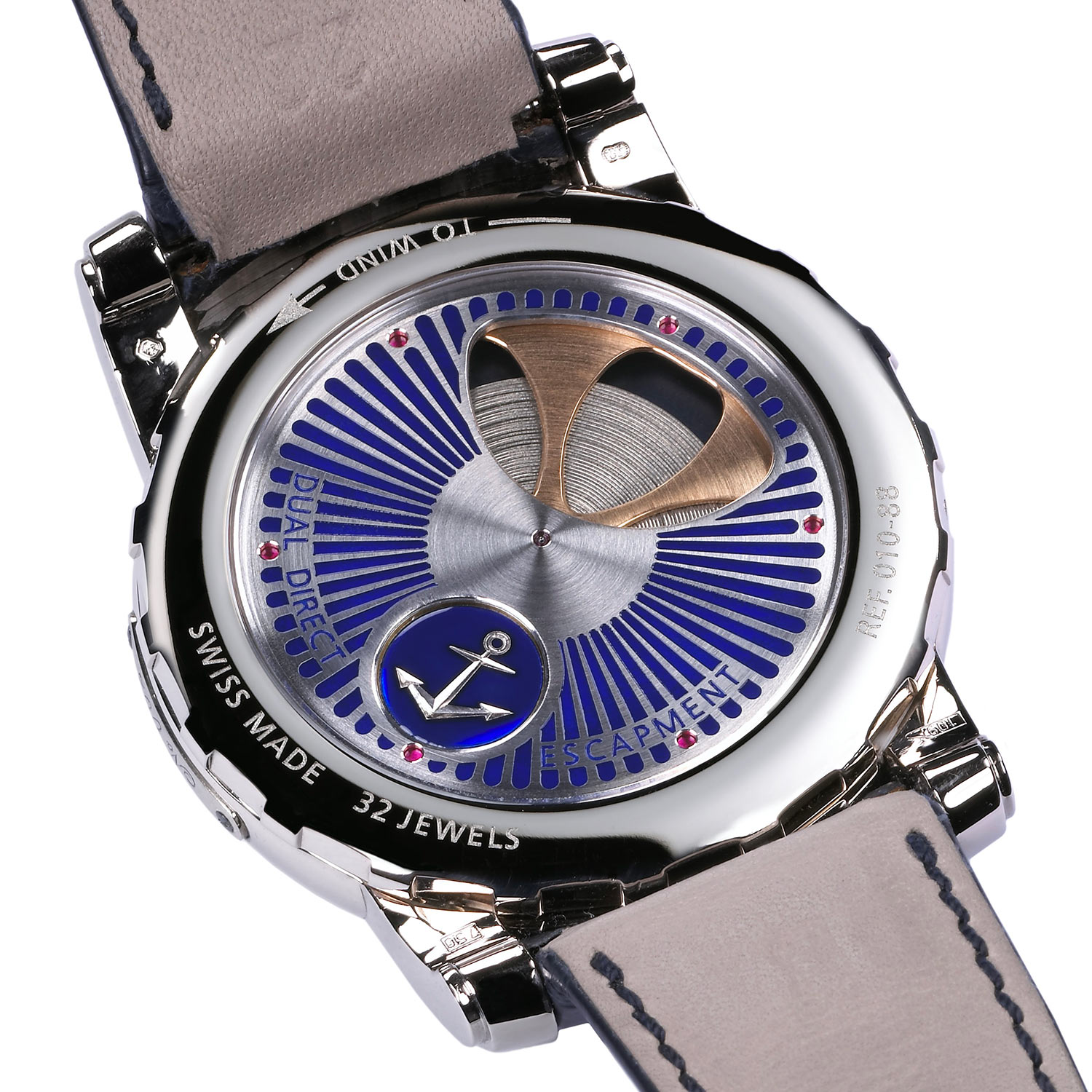


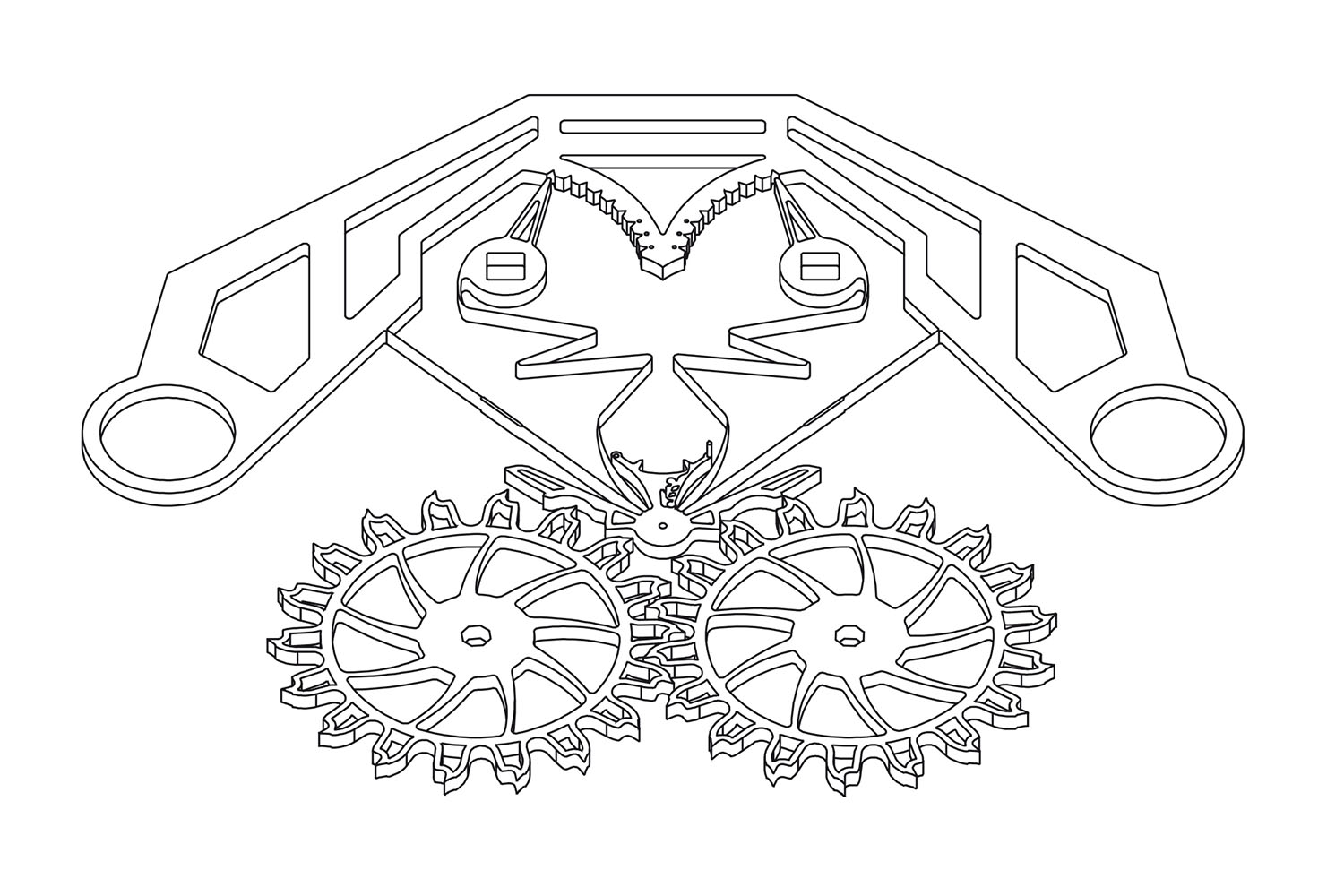
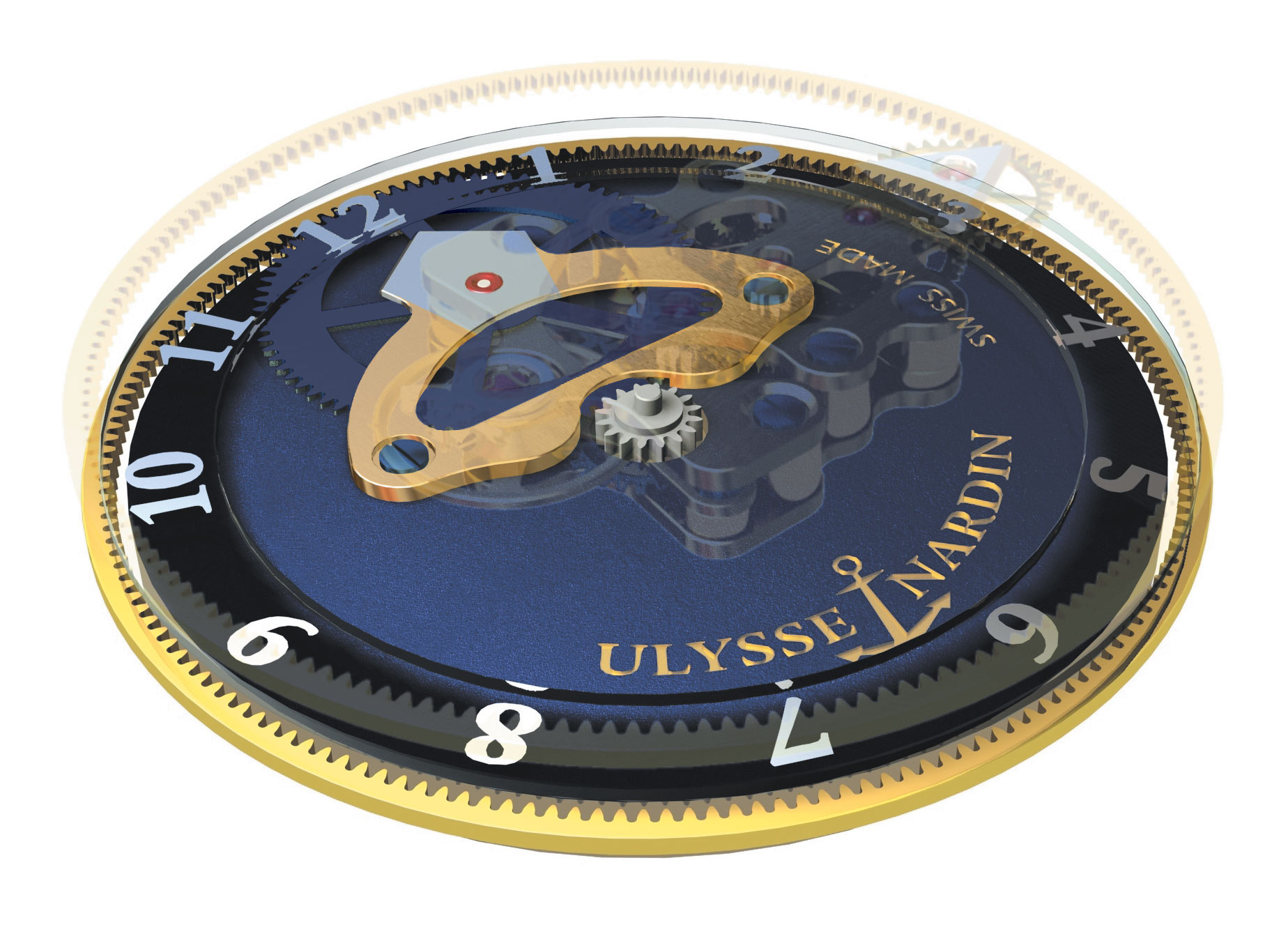




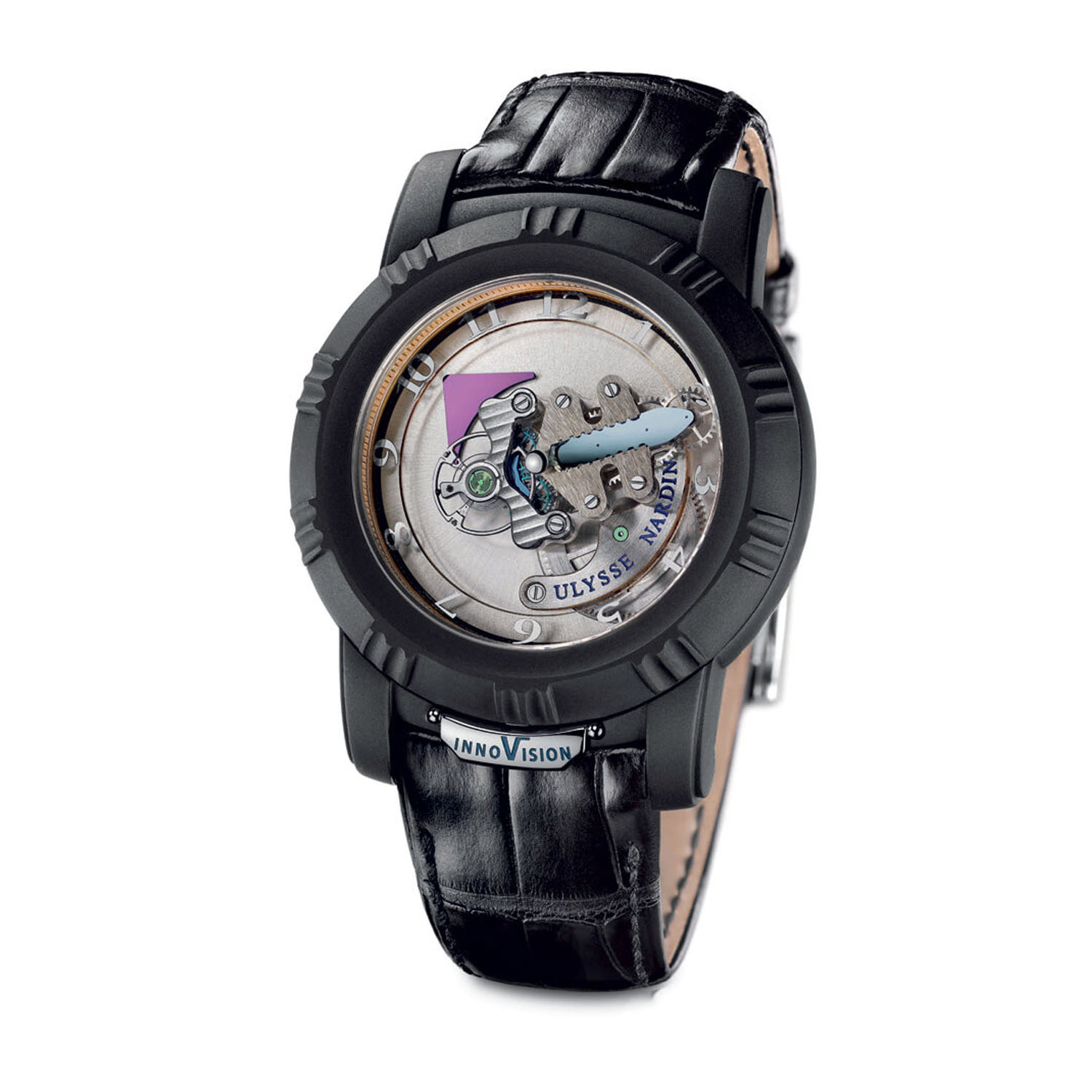





















1 response
I feel that the original Freak was something that I would get. None of the recent ones really retain the character of a classic watch unfortunately. While this may be a product of market demand for such unique pieces considering that Richard Mille and Hublot have taken a similar steps toward crowding the design, I am not a big fan of the additional details. But my wallet doesn’t currently speak the language – perhaps someday as a unique piece or from the used watches selection!